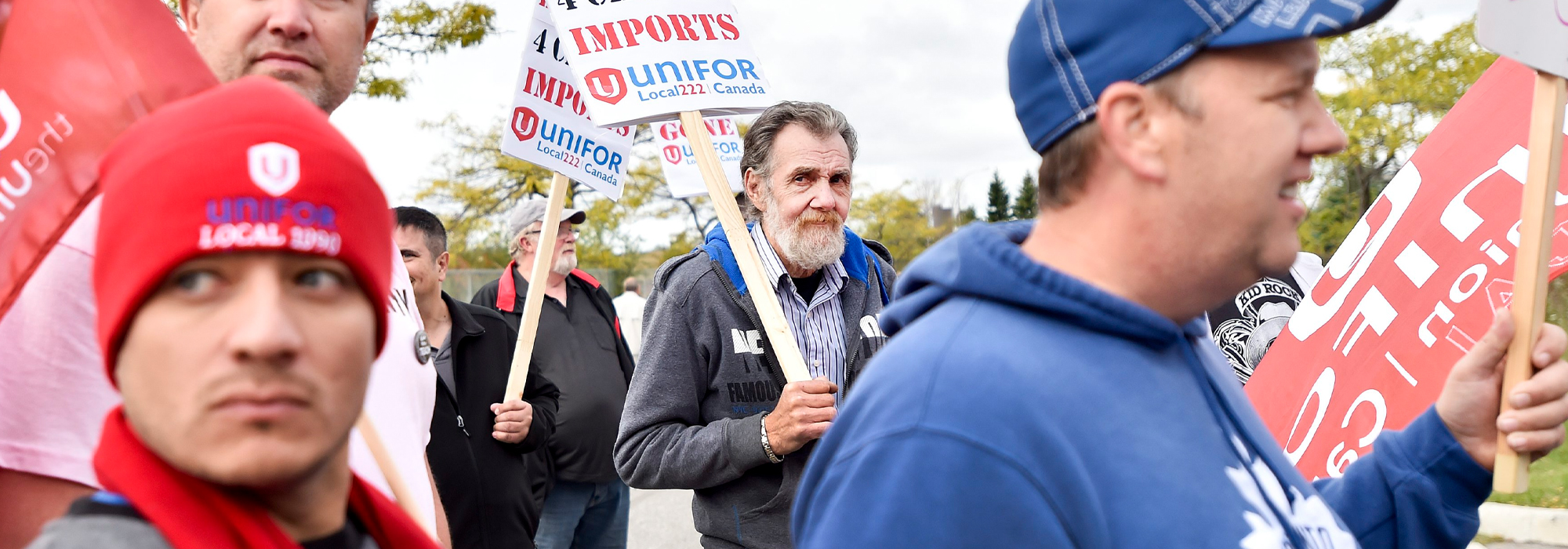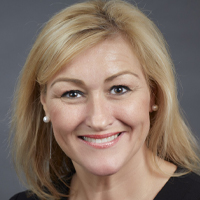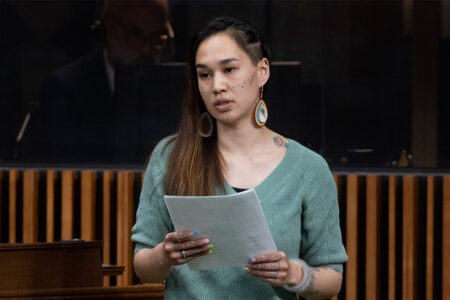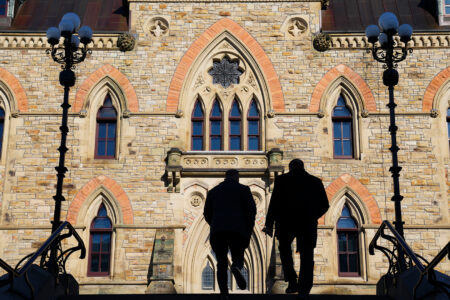
Advocacy group leaders play an important role in Canada’s democratic system by bringing up issues or constituencies neglected by political parties. In particular, union leaders, whose organizations form a significant share of these groups, are a key part of this process, defining and carrying out their group’s electoral strategy through outreach to union members and the general public. This role is especially notable in the case of the Public Service Alliance of Canada (PSAC), the largest union representing federal public employees, for whom the outcome of an election may have a significant impact on labour relations. This exploration of how PSAC’s leadership prepares and delivers its election strategy aims to cast light on the campaign activities of advocacy groups and their role in the election process.
The conduct of advocacy groups—and therefore the kind of work their leaders can and cannot do—is regulated under Elections Canada’s rules for so-called third parties. Over time, legislators and courts have tried to strike a balance between guaranteeing these groups’ freedom of speech and ensuring the groups do not take a disproportionate place or circumvent campaign and party financing laws.
Third party expenses during campaigns are strictly limited. Advocacy groups have to report on both partisan activities and advertising, the latter including, during campaigns, issue advertising that would not target a specific party or candidate. Elections Canada has adopted an extensive definition of what qualifies as electoral advertising, by including most messages supporting or opposing a position taken by a political party. Use of social media and other electronic ways of communication also belong to the list of regulated activities. Each registered third party is allowed to spend up to a certain amount during the pre-election period, usually three to four months before Election Day. They are permitted to spend up to another, separate amount, during the official campaign.
Unions form about 20 percent of third parties registered under Elections Canada. In Canada, the labour movement’s relationship to electoral politics has been largely dominated by its connection to the New Democratic Party (NDP). The party counted unions among its founders and its constitution has allowed them to become affiliates and to have representation in its governing bodies. Unions were also a major source of income for the NDP until the government barred all union and corporation contributions to political parties. Surprisingly, this new framework did not have a significant impact on the party’s relationship with unions, proving the strength of their bond, despite some policy divergence.
Not all Canadian unions affiliate with or even support the NDP, however, particularly in the case of some more conservative craft unions and, for different reasons, most Québec unions. Similarly, some unions have promoted strategic voting, mostly to avoid a Conservative victory.
At the PSAC, leaders are elected by delegates at the union’s convention: the president, the national executive vice-president and the regional vice-presidents form the Alliance Executive Committee, the executive body of the PSAC. During electoral campaigns, the national leadership is in charge of applying the orientations adopted by the convention. Executive members participate in those debates, but do not decide by themselves what the general orientation should be.
Preparing for an election campaign
Often, unions have a two-pronged approach to elections: they have to convince their members to vote according to the union’s position, and they try to influence the broader population to support their views and vote accordingly. In this work, union officials also represent the public face of the PSAC, addressing the media on its behalf and reaching out directly to politicians to promote their positions.
Political representation is an important component of PSAC officials’ day-to-day work. As the main bargaining agent for federal employees, they act as labour relations officers and as political representatives of their members. The executive members are at the heart of this dual relationship with the state and with the governing political parties. Their regular contacts with government representatives and political staffers set the groundwork for their duties during the campaign.
Union officials play a crucial role in preparing members to communicate with MPs. They have to make sure the position put forward by the union is consistent, whether it is communicated by union members or by national officers. As part of this effort, the PSAC executive provides a lobbying kit for its members that is updated monthly. The kit summarizes the positions and priorities of PSAC and the ways to reach out to politicians to promote these goals. When a regular lobbying activity happens in an election year, it becomes part of the plan of the union to push forward its agenda. The National Lobbying Day organized by the Canadian Labour Congress—to which PSAC is a major contributor—is one of those events. On that day, rank-and-file members meet with Members of Parliament in Ottawa, prioritizing those bearing the portfolio of labour, to promote the positions of their unions.
Knowing where a union’s membership stands politically is another crucial part of preparing for an election, especially for a large union like PSAC, whose membership covers a broad range of occupations, as well as members with varying degrees of identification with the union itself and its positions. This is usually done through direct contacts between the executive and the members, as well as through the internal representative structures of the union. Union leaders also use internal polls to find out their members’ concerns, their perception of the current government, and their voting intentions.
However, the goal of the executive is not to tailor the organization’s position to the dominant one of its membership. Rather, the leaders seek to adjust the electoral strategy so that it reflects the union’s values and ideology, along with the capacity of the union to mobilize its membership on this basis.
Sounding out party candidates
When an election is scheduled, the PSAC National Convention preceding the election determines the union’s position and adopts a budget specifically for the campaign. The executive is then mandated to put together the union’s strategic plan. The PSAC usually encourages the election of candidates supporting the development of federal public services and in line with the values of the labour movement. The executive must then refine the position and determine what tools the union will use to act on that mandate. This entails writing to party leaders to inform them of the union’s priorities and asking them their take on those issues. Using these answers to hone the union strategy, the National Board of Directors, the highest governing body of the union between conventions, then adopts a final strategic plan, shortly before the official pre-electoral period.
The strategy is two-fold: convincing the members to vote according to the union’s recommendations, and raising awareness of its positions among the general public. Executive members play a central role in both aspects. As its highest elected officials, they embody the union and their voice has a significant weight with the members.
A major part of the strategy is to meet with as many members as possible. This is done through a two-month-long, nationwide tour, during which the leaders meet with thousands of PSAC members. These meetings allow the president and the national executive vice-president to explain the union’s positions, encourage the members to get involved in the campaign, and exchange with them. This can be a delicate exercise. Union members do not follow blindly the instructions of their leadership. Leaders use the meetings to carry their message and make members aware of the positions of the parties and on their potential impact on the federal public service, but they do not impose a view or suggest which candidate to support. The personal qualities of the leaders play a particular role, using their legitimacy and access to argue in favour of a position without giving the impression that they are dictating a choice.
For all advocacy group officials, communication with their members is a particularly efficient and privileged way of campaigning, because it is not included in the activities regulated by Elections Canada. Even during the pre-electoral or the electoral period, membership outreach is not as restricted as activities directed to the public.
For all advocacy group officials, communication with their members is a particularly efficient and privileged way of campaigning, because it is not included in the activities regulated by Elections Canada.
Depending on their resources, advocacy groups may target ridings where polls indicate that the race is close and involves a candidate the organization wishes to support or defeat. The national leadership defines the criteria for singling out those ridings. The PSAC executive usually favours ridings where the NDP candidate has the best chance, although it may support another one if they have a chance of beating the candidate of a party the union strongly opposes. The capacity of the union to campaign effectively is another consideration: areas where the union has a critical mass of members to help canvass are privileged. Union officials may also participate in local campaigns, by meeting with candidates, for example.
Media interviews are a big part of the leadership’s work during the campaign. With political parties and advocacy groups all fighting for airtime, executive officers use their notoriety and connections to make sure that the issues most important to the union are talked about, and that candidates are questioned about them. Union officials sometimes also use their media interventions to make the public aware of who their members are and what they do. This is particularly true of the PSAC, which is often less familiar to the greater public than its provincial counterpart. Educating the public about the role of federal employees can help convince voters to listen to the organization that represents them.
The leadership also supervises the content of the promotional material. Print material such as posters, flyers and newspaper ads, as well as digital communications, now form a significant part of third parties’ campaign efforts, and are regulated by Elections Canada. A website dedicated to the election is set up, with some sections presenting the group’s positions to the general public, and others containing information specifically for members. Social media accounts are also used. When a union leader is well known, her or his social media profiles can be used to help spread the message of the campaign.
Finally, nationwide advocacy groups often consist of umbrella organizations for smaller entities. PSAC comprises several unions, each representing workers from different federal departments or agencies. In this case, the leadership’s role is to make sure that the campaign is unified and the message consistent. Some members of the umbrella group may have the capacity to launch their own initiatives. The executive must then ensure that no unintentional repetitions or contradictory messages are issued. This is particularly crucial during electoral campaigns, where the ability to articulate a clear and coherent message is critical.
In sum, advocacy group leaders use a broad range of tools to advance their interests in a campaign, whether it is their reputation, their expertise or their connections. In the case of union members, they do not vote as a bloc with their leadership, but they do tend to support the party favoured by their union in bigger proportion than the rest of the population. The strength of a vast membership, such as that of the PSAC, remains a significant weapon in any election campaign.
This article is part of The Insider’s View Behind the Scenes of Election Campaigns special feature.











